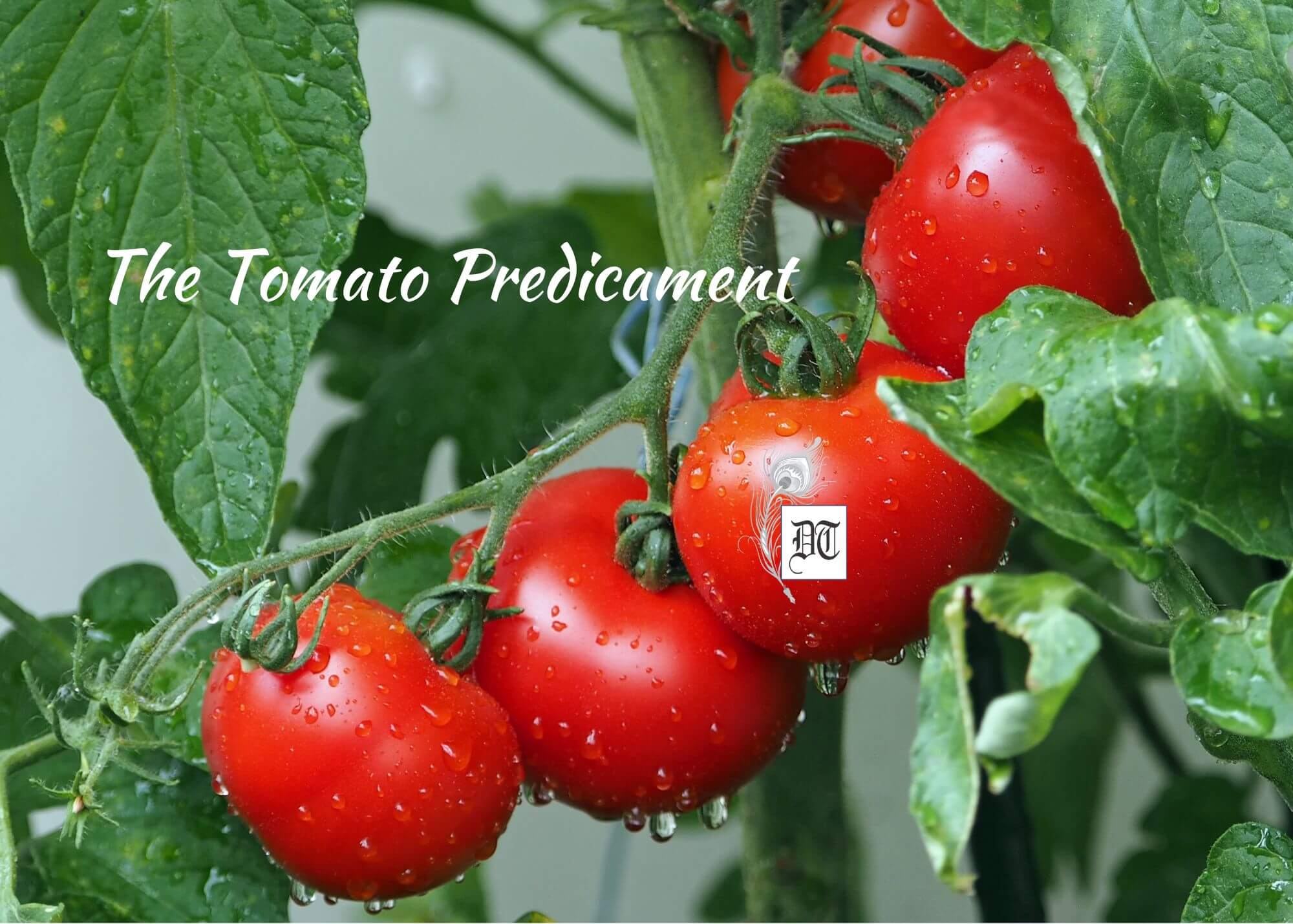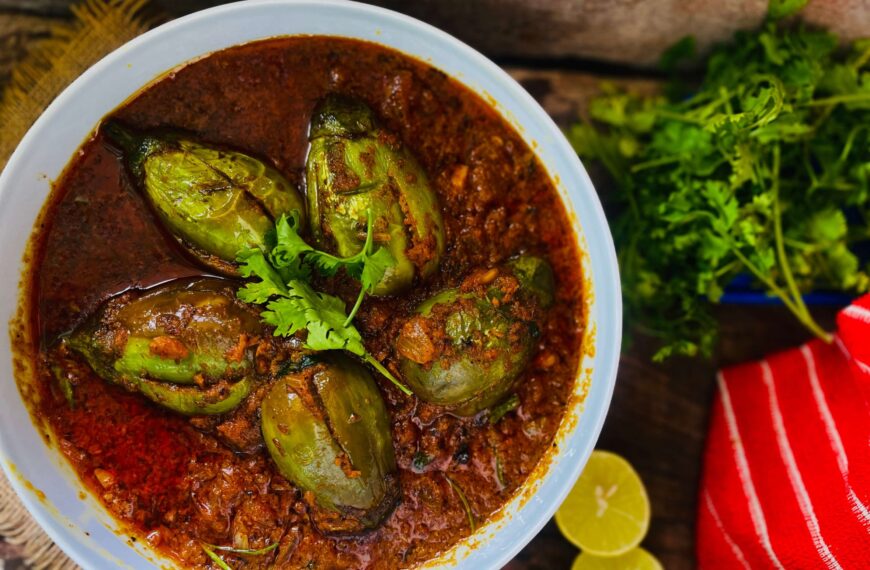Sreelekha talks of tomatoes’ rising prices, a staple in Indian cuisines, that have sparked debates, affecting farmers, authorities, vendors, and customers, exclusively for Different Truths.

I never thought I would spend time contemplating tomatoes, of all things. It’s primarily because of the quick, steady rise in their price over the last month. The local mini-market near my place in South Delhi, where I visit almost every morning to purchase my daily-needed vegetables, instilled the deep thought that I have been engrossed in for the past few weeks. At first, the price of tomatoes was around Rs 100/kg, which rose to Rs 120/kg, then Rs 160 per kg, which got me thinking about the reason behind the abrupt surge in price.
Initially, I thought that my inexperienced, innocent look was responsible for the expensive transactions on the red crop, which enticed the greengrocer to quote such high figures. I am one of those typical absent-minded, not-worldly-wise, lost-in-thought kind of woman who always worries about the topic for her next story. By the time I purchase vegetables and reach home, I nearly forget the rates that the vendor has charged, but this one about tomatoes stayed with me.
Every year there is an upsurge in price due to unseasonal rains, incessant downpours, destruction of crops, and soaring fuel prices, but there was something unusual about the current year, eliciting all the embroiled, diverse turmoil of disputes, arguments, and debates on the streets, markets, tea shops, restaurants, and of course, long, meaningless deliberations at the cosy spots of our homes. Perhaps we have short memories of the similar sorts of troubles that we faced the previous year. Whatever the case, tomatoes have become an integral part of our cuisine. In almost every household in India, one would invariably find the basic combination of potato-onion-tomato as the staples. Whether the tomato is a fruit or a vegetable remains a controversy.
The botanists would term it an edible fruit with seeds, while the nutritionists and chefs preferred to call it a vegetable.
The botanists would term it an edible fruit with seeds, while the nutritionists and chefs preferred to call it a vegetable. Whether it is meant to be eaten raw or cooked is another question that has undergone considerable discussion. But given the present skyrocketing rates of tomatoes, which are higher or at par with common fruits like apple, mango, and litchi, nobody will ever doubt its existence as a fruit or even consider it ever to show signs of humility, as it has all the attention of the glittering, glamorous world of the media, destined to mould into a commodity of utmost importance in the present times.
In the sixteenth century, tomatoes arrived in India thanks to the Portuguese. It is often referred to as the vilayati baingan (foreign eggplant). The ever-evolving kitchens of India, influenced by years of invasions from distant lands, colonisation, migration, and foreign cuisines, have amalgamated the tomato into our daily meals. Originally grown as a wild plant in the Andes Mountains of South America, tomatoes were domesticated in pre-Columbian Mexico and later brought to Europe by the Spanish in the early sixteenth century. The Italians were the first to familiarise themselves with the crop. The close resemblance of tomatoes to deadly nightshade—a poisonous family of Solanaceae plants that contain toxins—led to the occasional mistake of considering one for the other. Tomatoes, nicknamed ‘poison apples’, were initially seen with suspicion and considered watery, tough, and poisonous. It took a while before tomatoes, being extremely nutritious with significant amounts of vitamin C, folate, and their red pigment lycopene, which has antioxidant properties, were considered edible foods. After its intrusion in India, the tomato adapted well to our warm climate, and our country became the second-largest grower in the world, producing approximately 20 to 21 million tonnes every year.
Before the appearance of tomatoes in the kitchens of India, there were curries, dals (lentil soups) and others that had various souring agents…
Before the appearance of tomatoes in the kitchens of India, there were curries, dals (lentil soups), and others that had various souring agents—a variety of limes, tamarind, kokum, yogurt, and the lesser-known ou tenga (elephant apple)—to add that astringent taste, balance, and body. Tomatoes remain a lesser-used ingredient in many parts of South India, the Northeast, and Jammu and Kashmir. The colour, taste, and versatility of this common culinary ingredient have contributed to its popularity and abundance in our kitchens. In the cuisines of North India, the gravies are prepared with the popular tomato-onion-ginger-garlic-chillies combination. Though the thought crossed my mind to do away with the tomato due to the price hike, its omnipresence in curries, and stews, as a filler in a salad or sandwich, and as a colouring agent in tempering for dals (lentil soups) and other vegetable dishes deterred me from detaching myself from it. Hence, I couldn’t remove it from my kitchen.
One of my neighbours opined that the vegetables in the local, mini market are sold at a cheaper rate than the ones quoted by the vendors that come to our doorstep. But with the little bit of memory that I have left about the rates stated at these two places, I am unable to find any variation as such. It’s probably the volume of purchases that made a difference. If you purchase a single-bottle gourd, the price is going to be higher than that of perhaps one or two kg of the same commodity where the vendor gives a concession. But in the case of tomatoes, the story is now altered. There are no concessions or relaxations in the rates. Gone are the days when the vendor, while weighing any vegetable, used to balance the scale by adding a couple of tomatoes that were cheap at the time.
It’s only been a week since I went to the local market to purchase a few vegetables along with tomatoes, and I paid Rs 200/kg for them. This was from a greengrocer named Javed, from whom I generally purchase vegetables, as he brings in few but fresh items. His tomatoes are bright and seductive—fully ripe, healthy-looking, tight, and shining red. Previously, when the price had just started increasing, I decided to try other vendors. The cost of the pale, orangish, partially unripe ones—mostly tight while some were soft to the touch—was almost half the price of the tomatoes sold by the known fellow, quoting perhaps the highest rate in the market.
“Are these tomatoes good?” I asked the slim, young vendor with a servile attitude.
“Of course, ma’am! They are the best in town at such a cheap rate.” His sugar-laden words indulged me, and I was swamped with his cheap, effortless eloquence.
I mentally patted my back, complementing my wisdom in choosing tomatoes at a low cost amid such a crisis.
I mentally patted my back, complementing my wisdom in choosing tomatoes at a low cost amid such a crisis. It didn’t matter if they weren’t good-looking, as I would whirl them in a mixer and they would disappear in the curries like sugar in water, and no one would ever know about their unpleasant appearance. Then I would add red chilli powder to bring out the vibrancy of the red colour.
Delighted with my choice, when I cut open the tomatoes, I found white, over-enthusiastic wriggling worms coming out of some of them.
The next day, when I went back to my known vendor, Javed, he said smilingly, leaning confidently to my ear, “Tomatoes sold by the other guys are full of worms. My ones are pure gold.”
Embarrassed by my failed judgement the previous day, I nodded my head in agreement. As I entrusted the choice of my vegetable purchases solely to Javed, he advised me to use tomatoes sparingly and judiciously, similar to the warnings that we receive through phone messages from our government whenever there is a water crisis in any area.
‘This time you got five tomatoes; that’s half a kg for Rs 100, which comes to Rs 20 per tomato. Use only one tomato for each curry over the next couple of days. Next time, when you come to the market, the price would be around Rs 300/kg.’ He proffered his opinion.
I wondered whether this was feasible in my case and in the kitchens of well-known restaurants where tomatoes were relegated to almost every dish to add the supporting tangy flavour and attractive colour to the dishes. I heard that McDonald’s had removed fresh tomatoes from their pizza and other items. Instead, they were providing tomato sauce to be consumed with the food. The commoners are also being instructed to use tomato puree instead of real tomatoes for cooking. As tomato prices hit an all-time high, cheaper puree sales are blooming, and if it continues this way, the puree available in grocery shops and shopping malls will soon be out of stock. I am constantly receiving notifications on my phone of no-tomato recipes that can be tried at home as well as alternatives that can be used instead of the red-hot crop.
Almost every day, tomatoes occupy a special place in the headlines of leading newspapers and media channels…
Almost every day, tomatoes occupy a special place in the headlines of leading newspapers and media channels that keep reporting bizarre incidents related to the hike in price. The only solace amidst grieving souls like us tormented by the spiralling tomato prices is that some of the tomato farmers are turning crorepatis during this time. Otherwise, it hurts to learn that our farmers are always bearing the brunt of erratic weather conditions, burdened by the high rate of seeds, fertilizers, and agricultural equipment, and severed from peace by the unusually high commissions of the middlemen, thus leading to their inability to pay back the loans drawn, with some of them actually taking the gruesome step of committing suicide.
Some of the news items regarding the tomato that caught my attention are as follows:
- UP vegetable seller hires bouncers to guard tomatoes amid price surge – NDTV
- Chennai vendor sells tomato at Rs 20/kg for a day amid soaring prices – Mint
- Tomato price hike: Surging tomato prices force vegetable sellers to install CCTV – Times Now
- Free tomatoes with a smartphone in M.P. – Hindustan Times
- Argument over tomato prices turns violent, vendor injures customer with weighing scales—The Indian Express
- “Phele paisa baad mein tamatar!” Samajwadi party worker hires bouncers as tomato prices skyrocket—Business Today
- MacDonald’s drop tomato from burgers cites “quality concerns” amid price rise – India Today
In reality, tomatoes are now more expensive than most fruits, despite the fact that producers were only throwing them away a few months ago due to an excess of production. I wonder how every year the La Tomatina festival is celebrated in Spain, where tonnes of tomatoes are wasted by revellers who throw tomatoes at one another for petty entertainment on the streets of Brunol.
A couple of days back, on one overcast morning, when I visited the local, mini market near my place, I found Javed, the greengrocer known to me, in a dishevelled state, bowed back, a weathered look about his face, and a sharp distinctness of disquiet about his demeanour. The hair on his head rose with alarm, while his eyes darted here and there in search of something, probably a lost valuable. Three or four customers who were busy sorting vegetables other than tomatoes were all around him. Though I found something strange in Javed’s deportment, I preferred not to ask him anything about it.
I thoroughly checked his cart but couldn’t locate the tomatoes.
“Where are the tomatoes?” I inquired.
“I have been looking for them for the past ten-fifteen minutes.” His words came out in a desperate rush. “I had gone to pee, and when I returned, I couldn’t find two bags of tomatoes weighing approximately 10 kg.” He continued, and his last few words came out in a croaky whisper.
“He had asked me to keep an eye on his cart, but I got busy with my customers and didn’t notice when someone stole the tomatoes.” A fruit vendor standing next to Javed with his cart full of mangoes said this, lowering his eyes with shame.
“Oh, no!” I felt sorry for the poor guy, but I had to purchase tomatoes for the chicken curry, whose base gravy had to be made with tomatoes. There wasn’t any other vendor in the market whom I could trust when it came to choosing the best tomatoes.
Tomatoes being ubiquitous in my kitchen, I kept wondering what to do…
Tomatoes being ubiquitous in my kitchen, I kept wondering what to do and mentally calculating what else would be required to cook another menu to substitute the one with tomatoes, when I heard a ripple of laughter. I turned around to the side from where I heard it and found someone scything through a crowd of customers across the road and then emerging before our eyes. He was a bespectacled, middle-aged man walking towards us with two transparent, plastic bags of tomatoes.
Javed’s face brightened on seeing the man appearing with the precious bags. A thin smile brushed past his lips, as the man ambled up to him and handed him his prized possessions.
“How was it? I saw your face darken with anxiety. You ought to sell them for Rs 60 per kg like before.” The middle-aged man winked and uttered jovially, trying hard to make it sound hilarious.
I felt disgusted upon realising that the middle-aged man was a customer known to Javed who had played this untimely prank. As restlessness took over me, I wondered whether the tomatoes were alright and didn’t get squeezed or manhandled while the man walked away with them.
As I opened the bags, shinning red tomatoes jumped out as if in joy…
As I opened the bags, shinning red tomatoes jumped out as if in joy, knowing their wondrous fate in the glistening chicken curry that I had been planning to cook. That day, Javed had charged me Rs 320 per kg. I had a doubt whether that was the actual rate, as during this period vendors have been manipulating and extorting exorbitant rates that were perhaps far away from the actual price.
As per my experience, addressing the issues of a sudden fall in production, eliminating the pernicious effects of soaring prices, and bringing them back to a normal/reasonable level would be a real conundrum for the authorities. The only silver lining amid the dark cloud of price hikes is that the much-deprived growers and vendors of the perishable crop are earning some good profits.
Picture design by Anumita Roy






 By
By
